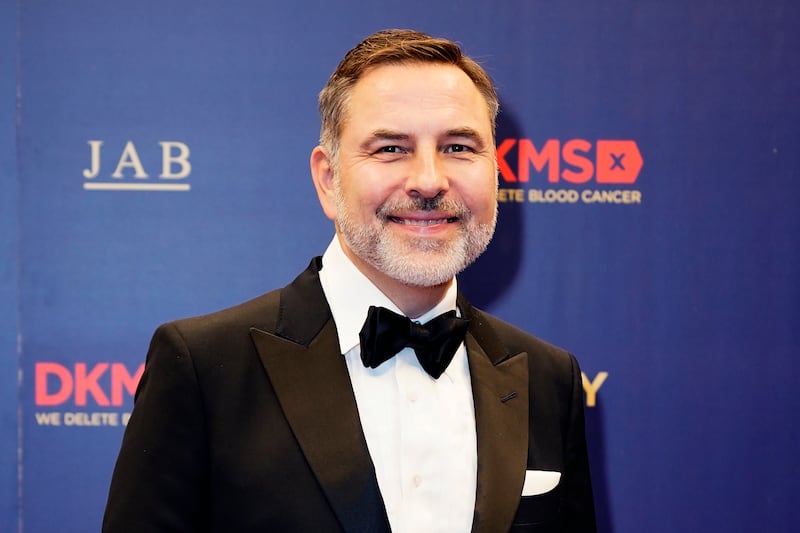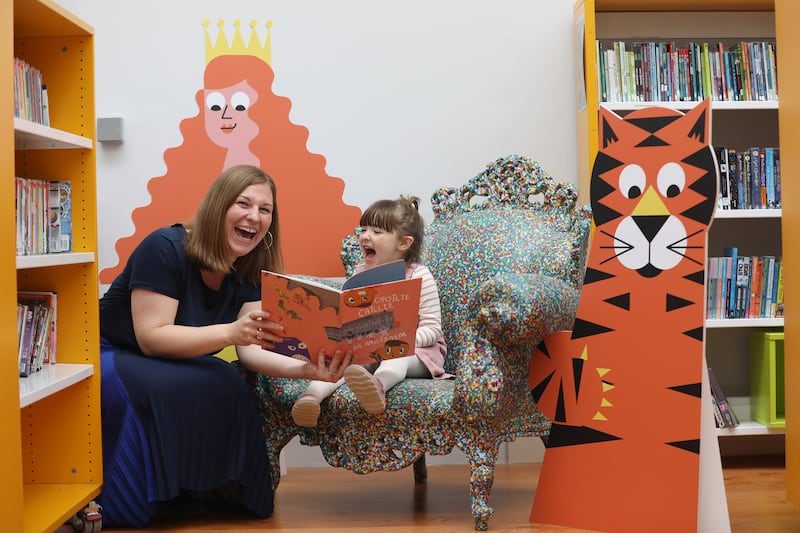There are more than 330 children’s authors and illustrators in Ireland, or Irish and living abroad, according to Children’s Books Ireland (CBI). They’re published by companies including O’Brien Press, Little Island and Gill Books, as well as by international publishers. Yet this year, to mid-August, of 1,000 books for under-18s sold here, excluding educational titles, only 141 were from Irish authors and/or illustrators. None were in the top 30 and most were outside the top 100. In Dublin City libraries, the data is similar. Only author Shane Hegarty figured in its top 10 this year.
American and UK multimillion sellers dominate, with series such as the Diary of a Wimpy Kid by Jeff Kinney and Dog Man by Dav Pilkey, both from the US. And of the 1,000 books charted – compiled from Neilsen data, the official, though not comprehensive, figures for book sales – 13 were written by David Walliams, the English TV personality and comedian. While it’s great to see children reading any book, why are they reading less Irish work, and how can we put more in their hands, given an increasingly transnational market?
Author Sarah Webb posted her concerns on social media recently when she noticed there hadn’t been an Irish writer or illustrator in the Irish top 10 for over 20 weeks.
“I started comparing it against the adult original fiction chart, and there’s always at least five Irish authors – and I thought, there’s a real disconnect there.”
In the 1990s, children’s books were big news, but less so now.
“I go into schools during term time and ask ‘Who is your favourite author?’ and they very rarely tell me an Irish author any more.” Visibility is an issue. UK publishers have larger marketing budgets and a greater presence in stores. Book festivals have reduced their children’s offering, too, says Webb, who’s also an events manager. While the Dublin International Literature Festival had “a whopping 59 children’s events”, other book festivals had none at all.

Laureate na nÓg, Patricia Forde, highlights “gatekeepers” such as parents, teachers, aunts and uncles who are “inclined to choose something they’ve heard of” and that’s displayed “all over the shop”. And it’s hard to get column inches or coverage on TV and radio.
“It’s that thing of getting name recognition, brand awareness… I hate that phrase but that’s what it is.”
Celebrity-authored books are on the increase, with some attracting more critical acclaim than others, but all attracting big-budget marketing.
The booksellers are putting the big brands at the front of the shop, so the kids are seeing the big brands and buying the big brands
— Elaina Ryan, Children’s Books Ireland
Irish author Eoin Colfer is slow to criticise celebrity offerings, but if he could change one thing about the book market, he would make it a meritocracy.
“I think if someone submits a book and it’s not any good then it shouldn’t be published. And it doesn’t matter if they’re a movie star or a pop star or in the royal family somewhere, because there’s a lot of really great people trying to get books published who are not getting books published because the budget is gone.”
If there’s a slot on radio or TV for a kids’ book then “good, bad or indifferent, that spot goes to the celebrity”, he says. But, though David Walliams is often “the poster boy for that”, he shouldn’t be, says Colfer, because “he does good work and has always been a writer”.

Publisher Ivan O’Brien, of O’Brien Press, highlights a “change in selling models” with “more of a front-of-store international retail model” and “piles of a relatively small number of books sitting at the front of the shop”.
“And the retailer has changed their message from ‘Come on in and look at what you might want to buy’ to ‘We think you should buy these’.” Independent bookshops are “absolutely brilliant”, he says, with retailers who have committed, knowledgeable sales staff. But big international publishers are also good at repackaging their back list, and “dead authors are making new strides”. Irish children need to see themselves on the page, he says.
“They just don’t know who they are and where they’re from otherwise, and you end up with a bland internationalism – and that’s not healthy or good.”
Marita Conlon-McKenna, first published in 1990 with Under the Hawthorn Tree, believes there’s been a “back-step” in the Irish market. Though her most recent novel, Fairy Hill, sold well, she was surprised at how little attention Irish writers now get. Author Sam Blake was also surprised when her first young adult (12-18) novel, Something Terrible Happened Last Night, was published. It’s frustrating to see directly comparable Irish children’s books “overlooked by book buyers”, she says.
Elaina Ryan, chief executive of CBI, which has a remit to promote reading and support Irish children’s literature, says a lack of parental knowledge is a real factor.
“It’s that cycle of the publishers putting their money behind the big brands, so the booksellers are putting the big brands at the front of the shop, so the kids are seeing the big brands and buying the big brands and talking to each other about the big brands.”
She says compounding this is a lack of sustainable funding for school libraries, which means schools often opt for “quantity over quality” with publishers who can offer discounts.

The media also has a responsibility, and children should be offered Irish books when they get to the end of a popular overseas series, she says, citing options such as Milly McCarthy is a Complete Catastrophe, by Cork author Leona Forde, or Pablo and Splash, by Sheena Dempsey, due out in January.
Asked about the role of bookshops, she says independent stores “do an amazing job” and the Dubray chain have “excellent children’s buyers”, but for the bigger chains there are “paid-for slots”. It’s the same for the Christmas catalogues.
We have alternatives. It’s just about getting the kids to know about them, which could be where media comes in to push them
— Lynda Laffan, Eason
“If you want to get your book up front in the Christmas catalogue you’ve got to pay for it, so that really skews the offering for consumers at the other end.”
She says a “guaranteed Irish” scheme for books, like that for groceries, might help, with dedicated bays out front in shops.
Eason book buyer Lynda Laffan says the chain has plans to promote Irish authors in the run-up to Book Week, in October.
“We will be really pushing forward Irish children’s writers and books for Irish kids,” she says.
She mentions Aoife Dooley’s “fabulous graphic novels” as an Irish alternative to Dog Man.
“We have alternatives. It’s just about getting the kids to know about them, which could be where media comes in to push them.”
She also suggests publishing schedules are a factor in Irish books not charting.
“We’re at the mercy of the publishing schedule of the publishers, you know, so for example, in the next couple of months we’ll have fabulous new books.” She mentions upcoming works from Ellen Ryan, Lucy Kennedy, Alex Dunne, Sinead Moriarty and Nina Carberry.
“When they start to come out I hope we’ll start to see Irish kids’ books creeping back into the top 10 sellers.”
In 2022, Eason’s best seller for children was the 17th Wimpy Kid title, and Laffan expects the 18th to top this year’s chart. Guess How Much I Love You by the late Samuel McBratney, first published in 1994, topped the Irish list. Social media has a strong influence on what young adults want to read, Laffan says, particularly BookTok.
“It’s unbelievable. It’s like word of mouth for the 21st century magnified.”
Eason carries everything, supports Irish authors and publishers, and always gives them great presence, not only in store but also online, Laffan says. Can publishers pay for certain positions in stores?
“Like all retailers, we have commercial relationships with our suppliers which are confidential, but we position books in-store based on customer demand.” She suggests the best thing authors can do to build up a book is to go out on the road into schools and libraries and meet readers.
“It’s hard work, but nothing ever comes easy, does it?”
We often find that when we do point out to parents or buyers that this particular book is Irish, they are very, very keen to support and always very pleased
— Trish Hennessy, Halfway Up the Stairs bookshop
In Dubray, which has 11 stores and is owned by Eason, the latest Wimpy Kid was also their best seller last year, says marketing manager Susan Walsh. Their most popular Irish books were the two €1 World Book Day editions, followed by Fairy Hill, which featured as a book of the month. She says Irish books “hold their own”.
“We don’t do a separate section, but they all perform very strongly.” She’s expecting good things from upcoming books including a new PJ Lynch illustrated work written by Eoin Colfer, and Patrick Donnelly’s The President’s Dog.
Does Dubray offer paid slots to publishers?
“We don’t do that so I couldn’t answer any questions on that,” says Walsh.
[ How do I get my child to read books with more words and fewer pictures?Opens in new window ]
In Co Wicklow, at Greystones-based bookshop Halfway Up the Stairs, one of only two Irish bricks-and-mortar stores dedicated to children – the other is Tales for Tadpoles in Bray – there are a greater number of Irish books in their top 10, owner Trish Hennessy says.
“We often find that when we do point out to parents or buyers that this particular book is Irish, they are very, very keen to support and always very pleased,” she says.
Last year, their top three bestsellers were Irish books, two with Irish publishers. They don’t offer paid positions to publishers, preferring to curate the books themselves.
After Sarah Webb highlighted her concerns, a group involved in children’s books came together to help with promotion. Among other things, they’ll create a chart with indie bookshops recommending a top 10 of Irish books as an alternative to the Neilsen chart.
The campaign, Discover Irish Kids’ Books, will launch at the end of the month. For further information and recommended books see discoveririshkidsbooks.ie andchildrensbooksireland.ie.












